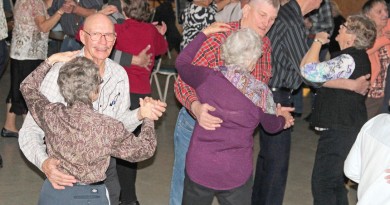Accordion facts
Whether you dub accordion music annoying or enticing, you cannot deny the instrument’s persistence.
The earliest version of the accordion emerged in the early 1800s, and one can still find it on many street corners today. Certain universities, museums, and soloists have assisted in the accordion’s longevity.
Following are 10 facts about the instrument that may satisfy our enduring curiosity about the instrument.
1. Accordions can be classified in many different ways, such as by body shape, keyboard type, and the organization of notes. Models can be further divided by quality of manufacture, refinements of design, numbers of parts, tuning systems, and extra ranks or registers of different-sounding reeds (operated by shifts).
2. Castelfidardo, Italy has arguably produced and exported the most accordions ever.
3. Franz Walther from Vienna created the first chromatic button accordion in 1850.
4. The first chromatic button accordion had 46 buttons for the right hand, arranged in three rows of minor 3rds, each row a half-step apart. The bass section had eight diatonic buttons divided between single bass notes and two-note chords.
5. By the early 20th century, the accordion was associated around the world with traditional music, cafés, dance halls, and music halls.
6. Hugo Herrmann composed the first piece for a solo accordion, entitled Sieben neue Spielmusikenin 1927.
7. One of the most important composers of new music for the accordion was Wolfgang Jacobi (1894–1972).
8. Ernst Hohner founded and directed the Harmonika-Fachschule in Trossinge in 1931 with the help of Hermann Schittenhelm, Armin Fett, and Ly Braun. It was probably the first official state academy.
9. The World of Accordions Museum, which opened in 1993 in Duluth, MN is the only accordion-specific museum in the United States. It houses 1,000 instruments.
10. Accordions and concertinas came to African coastal cities Africa in the 19th century by European and West African (notably Kru) sailors, merchants, and settlers, and were eventually taken inland by migrant workers.



